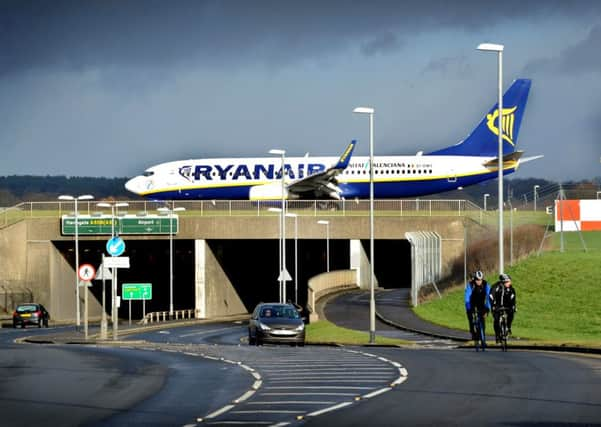Colin Speakman: How the train can take the strain to Leeds Bradford Airport


Far from solving traffic problems at the airport, CfBT claim that current road building proposals will simply exacerbate congestion and traffic pollution in north Leeds while causing considerable environmental damage, including loss of precious open spaces within the Leeds green belt.
An alternative, far more cost-effective rail option connecting passengers to the whole of West Yorkshire is proposed.
Advertisement
Hide AdAdvertisement
Hide AdIn a 10,000-word document, the group argue that the proposals will actually generate yet more traffic on the congested radial roads, such as the A65, into Leeds city centre. This will worsen already chronic air pollution in the city, and reduce access for local communities to their local countryside with severance of many public footpaths, including a section of the Leeds Country Way.
It is also suggested that the proposals will actually contradict and even undermine many current Leeds City Council policies.
The representation points out that using money from the West Yorkshire Transport Fund for this project would not benefit the whole of West Yorkshire.
Instead it would just be used for a purely local road scheme whose prime result will be to facilitate industrial and housing development in the green belt of north Leeds, yet will do nothing to benefit communities in Bradford, Wakefield, Kirklees or Calderdale.
Advertisement
Hide AdAdvertisement
Hide AdTransport planners determined to have a new road have failed to grasp that building a simple, low-cost rail option would deliver vastly enhanced connectivity across the region.
It is perfectly feasible and practical, and could be created by a low-cost spur, barely two kilometres long, from north of Horsforth rail station where a turn-round loop and signalling for trains are already in place.
Such a line and new airport station would cost less to build than the most expensive of the three road proposals, and could form part of the Leeds to Harrogate line electrification programme. The idea, which as has the professional support of a very experienced local civil engineer and rail expert, is perfectly feasible.
Such a scheme would reap far greater economic, social and environmental benefits than any road proposal.
Advertisement
Hide AdAdvertisement
Hide AdThe rail spur would allow the airport to be served by a station fully integrated with the West Yorkshire Metro train system and so serve the whole of West Yorkshire, not just north Leeds.
Claims that the airport requires massive rail investment appropriate for an air terminal 10 times the size of Leeds-Bradford, are, it is suggested, merely a deliberate smokescreen to try to justify a major new road building scheme.
To kickstart the use of rail to and from the airport, it is suggested that a shuttle bus service to and from Horsforth rail station would be a low cost option that would cost no more to operate than the high levels of subsidy paid for the present airport bus service to Leeds, which suffers from serious city centre congestion, but which would enjoy only minor temporary improvement as a result of any of the new road schemes.
Once in Horsforth, passengers would benefit from frequent, traffic-free access, taking barely 13 minutes, not only to the centre of Leeds, but to the hub of the Metro rail network, offering fast, easy access to the whole of West and South Yorkshire and York.
Advertisement
Hide AdAdvertisement
Hide AdUse of the shuttle bus could help prove the case for the rail extension. When built, the rail spur would serve a strategically-placed airport station linked by travellator to the main departure and arrival halls.
Such a solution, using existing rail services, would cause far less environmental damage, be much more cost effective and help to reduce both traffic congestion and improve air quality not only in the centre of Leeds, but the whole of West Yorkshire.
New road building, as Government evidence shows, will simply generate more car journeys, worsen city centre congestion and pollution and would be a serious misuse of the West Yorkshire Transport Fund.
Colin Speakman is chairman of the North & West Yorkshire Campaign for Better Transport.